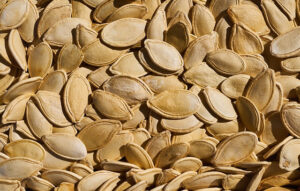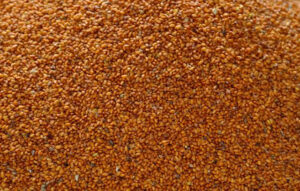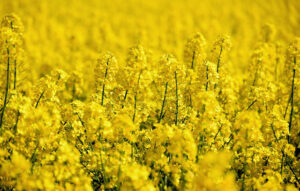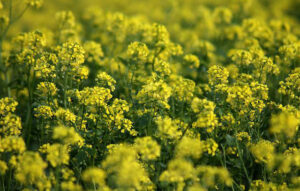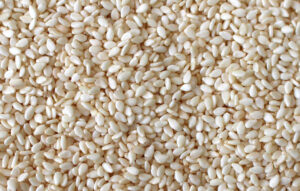GrainProTrade – Sesame seeds wholesale at producer prices
Our company GrainProTrade supplies sesame seeds directly from farmers in Central Asia at favorable conditions. You can safely buy sesame seeds from us without worrying about the quality, as all of our products are consciously selected by our QM staff in Central Asia and thus meet the highest standards, which guarantees the expected quality of the goods. Besides the high standard, the products are sold at an affordable wholesale price. The conditions for the sale of sesame seeds can be specified at any time in writing or by telephone with the manager. Our team provides our customers with the in Big Bag packed sesame seeds ordered by truck within 5 working days.
The main advantages of the ZusaWorking with our company:
- the high level of professionalism of our entire team, which ensures hassle-free delivery of high-quality sesame seeds in the shortest possible time;
- an appropriate price level, since we work directly with sesame seed producers in Central Asia, e.gusamen work;
- convenient delivery straight to you.
Contact our managers on the website or by phone. We offer high quality sesame seeds at an optimal price!

Sesame seeds

Sesame seeds
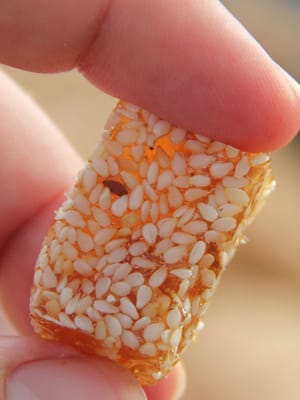
Sesame seeds
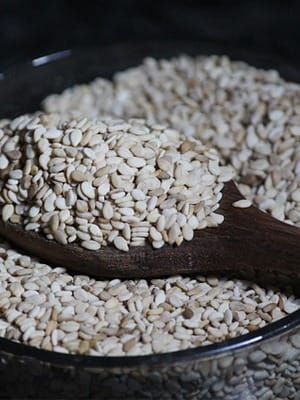
Sesame seeds
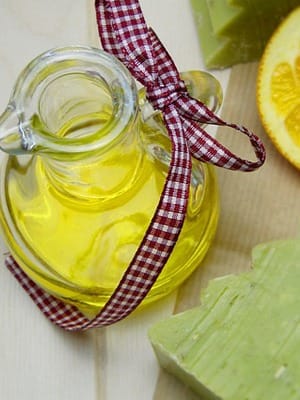
sesame oil
All about sesame seeds
The chemical Zusacomposition of sesame is rich in useful substances. Sesame seeds have a very high percentage of oil content, depending on the variety and the place where it grows, it reaches sixty. Sesame contains up to 20 percent protein and up to 16 percent carbohydrates.
Sesame seeds contain a rich ZusaComposition of vitamins: group A, E, PP, consisting of group B vitamins: folic acid, thiamine (B1), niacin (B3), riboflavin (B2), pyridoxine (B6), minerals: calcium, iron, potassium, phosphorus, zinc, copper, magnesium, manganese. Sesame seeds are also rich in amino acids.
The calcium content of sesame is higher than that of many cheeses, and it is also much better absorbed than calcium from milk. 100g of sesame seeds account for up to 1,4g of calcium, which meets the human body's daily calcium needs.
Sesame oil is rich in antioxidants called lignans, other products cannot boast of such a concentration. One of the lignans - sesamin - is found only in sesame. The phytosterols contained in sesame seeds help the human body to block cholesterol.
Sesame seeds are useful even in the smallest amounts. They even show themselves in the best light in lavish rolls made from refined flour and margarine. Finally, sesame seeds contain a lot of fiber, which helps everyone to help even the most "harmful" products pass through the gastrointestinal tract easily and with ease. At the same time, the stool is adjusted, and at the same time the amount of toxins and denatured proteins absorbed into the blood is significantly reduced, which can easily provoke allergic reactions of any severity.
The FettzusaMixture of sesame, despite its high calorie content, does a good job with excess cholesterol in the blood. In addition, lovers of sesame seeds not only reduce blood cholesterol, but also eliminate already existing plaques in the vessels. And this is the very prevention of most of the cardiovascular diseases that plague modern mankind (atherosclerosis, hypertension, etc.).
Sesame seeds contain the rarest antioxidants (sesamin and sesamolin) that slow down the aging of cells in the human body. And in terms of effectiveness in confronting cancer cells, these substances are almost on a par with modern pharmacological preparations. However, using sesame and sesame oil, you do not have to worry about serious complications and side effects, like anticancer drugs produced by the pharmacological industry.
Both oil and sesame have the ability to improve blood clotting, which is a real godsend for people suffering from hemorrhagic diathesis.
Sesame is an annual plant with a height of 60-150 cm. The root is pithy, 70-80 cm long, in the upper part it is branched, thick. The stem is erect, green or slightly reddish, 4-8-faceted, hairy, less often bare, usually branching from the base itself; Second-order branches rarely form. The leaves are regular, opposite or mixed. The leaves are hairy, smooth or wavy, 10-30 cm long, hairy. The leaf plate varies greatly in different shapes and within the same plant.
The lower leaves are usually round, full-page; medium - lanceolate, elliptical or oblong-ovate, full-sided, serrated, notched or deeply, finger-separated. The upper leaves are narrow, holistic. The flowers are large, up to 4 cm long, almost sessile, located in the axils of the leaves of 1-5 pieces. The cup is 0,5-0,7 cm long, is with 5-8 extended blades, green, viscous. The corolla is bilateral, pink, white or purple, thick, 1,5-3,8 cm long, see upper lip is short, 2-3 lobed; lower is longer, 3- and 5-lobed.
Stamens, number 5, are attached to the lower part of the corolla, 4 of which are normally developed, 5 -i is underdeveloped. There are less often 10 stamens. Pestle with an upper 4-9 nest, a heavily stained ovary.
The fruit is oblong, pointed at the top, green or slightly reddish, 4-9 nest boxes, 3-5 cm long. The seeds are ovate, flattened, 3-3,5 mm long, white, yellow, brown or black.
Most species of the genus Sesame grow in Africa, while sesame is commonly or Indian produced on an industrial scale in tropical and subtropical countries. It is grown in the Far East, India, China, Central Asia, Africa. The production of sesame is constantly growing, if in 1965 the total amount was about one and a half million tons, today this number has exceeded four million. The world leader in the production of sesame is Myanmar, followed by India and China in second and third place. Among the African countries, the leaders are Sudan, Ethiopia and Uganda, among the South American countries, Paraguay. This popularity of the plant is due to the beneficial properties that sesame seeds, as well as sesame oil, have.
Sesame refers to thermophilic plants. The seeds start at a soil temperature of 15-16 °C. The shoots die in frost from -0,5 to -1 °C. The optimal temperature for the growth and development of sesame is 25-30 °C. When the temperature drops to 12-15 °C, plant growth stops.
Makes high demands on moisture and nutrients. drought resistant. Black earth, slightly loamy and sandy, fertile soils that are free of weeds are best. A light loving plant for a short day.
In the first month after emergence, sesame plants develop slowly. Before the flowering phase comes a period of intense growth. The growing season of sesame depends on the variety and growing conditions and is (80) 90-120 days.
The best precursors to sesame in crop rotation are winter wheat, corn, and legumes.
Sesame responds well to fertilizers. A good effect is given by row incorporation when sowing granulated superphosphate worth 100 kg/hectare.
Sesame refers to crops with an extensive nutrient uptake: about 67% nitrogen, phosphorus and potassium are consumed by plants during the flowering phase and later. This is the reason for the high responsiveness of sesame to fertilization. During the formation of a second pair of true leaves, it is recommended to fertilize NPK in small amounts.
Sowing of sesame begins when the top layer of soil is sufficiently moistened and warmed to (15) 16-18 °C. When grown in irrigated conditions and dry soil, pre-sowing irrigation is carried out before sowing.
The sowing method is broad-rooted with row spacing of 45-70 cm. The sowing rate (5) is 6-8 kg/hectare. The sowing depth is 2-3 cm. After sowing, rolling is carried out.
When the sesame seeds are ripe, they crumble a lot. Harvesting begins when the lower leaves turn yellow or fall off, the lower boxes on the plants turn brown, but do not open yet, and the seeds at the same time should have a normal color, characteristic of the variety.
A two-phase cleaning method is more effective. When the boxes open, the seeds are shaken out of the sheaves 2-3 times by hand or crushed using combines with a pick-up machine. The sorted and peeled seeds are stored with a moisture level of no more than 9%.
Sesame ranks first among oil crops in terms of oil content. Its seeds contain 50-65% oil, 16-19% Protein and 16-18% soluble carbohydrates. The iodine amount of sesame oil is 103-112.
Sesame oil or sesame oil obtained by cold pressing is characterized by high taste and resembles olive (Provencal) oil. This oil has a light yellow color, excellent taste, there is no smell. It is used for food purposes, in the manufacture of preserves and confectionery, and in medicine.
Sesame oil obtained by hot pressing is used for technical purposes.
For example, sesame seeds are used in the confectionery industry to make sweets and oriental sweets, and a halva is made from peeled and ground seeds.
The cake obtained with the cold press process contains 8% oil and about 40% protein. It also finds application in the confectionery industry. The cake obtained by the hot-pressing process is used as a well-concentrated feed for farm animals. 100 kg cake corresponds to 132 feed units.



